Every combustion engine relies on a combination of oil, fuel, and coolant to function optimally. The engine oil plays a crucial role in keeping all the parts of the engine well-lubricated, thereby reducing the chances of premature wear and tear. This lubrication process is vital for the longevity and smooth operation of your engine.
The efficiency of your oil system hinges on the presence of an adequate amount of oil in your engine and the ability of your oil pump to maintain sufficient pressure for proper circulation throughout the engine. A drop in oil pressure in your engine can trigger various warning signals in your vehicle. These indicators may manifest as the activation of a low oil pressure light on your dashboard, heightened engine noise, or the emergence of unpleasant burning smells.
But what do these warning signs indicate? A decline in oil pressure can be attributed to several factors, some of which demand immediate attention more than others. Below are the top five reasons behind low oil pressure and the necessary servicing and repairs your vehicle might need to rectify each issue.
Top 5 Reasons of Low Oil Pressure
1. Check Engine Oil
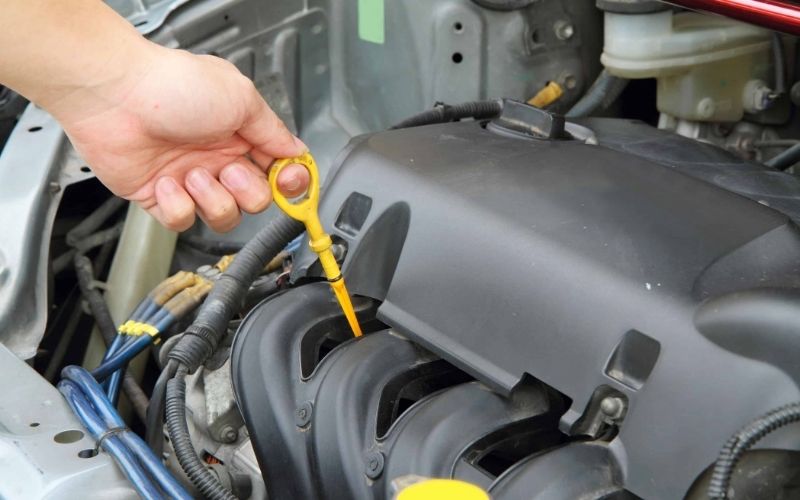
A frequent and straightforward reason behind low oil pressure is insufficient oil in your engine. When oil levels are too low, the oil pump struggles to create ample pressure for proper engine lubrication. This can lead to diminished lubrication, heightened wear and tear, and an increased likelihood of engine malfunction.
To determine if your oil levels are low and if a top-up is necessary, follow these steps:
- Make sure your vehicle’s engine is turned off, and then open the hood.
- Identify the oil dipstick, usually recognizable by a yellow ring or handle with the oil symbol stamped on it.
- Take out the dipstick and wipe off any oil residue present on its surface using a cloth to ensure accurate readings.
- Reinsert the dipstick completely, then pull it out again.
- Check the oil level indicated on the dipstick. Typically, dipsticks have markers for full and low levels. The low-level marker is often labeled with “ADD” or a symbol prompting you to add oil. If the oil level is below this indicator, your car needs a top-up.
- Consult your owner’s manual to find out the recommended brand and type of oil for your particular vehicle model and trim level. Some cars may specify the required oil type on the dipstick or oil cap (e.g., 5W-20).
2. Oil Leakage
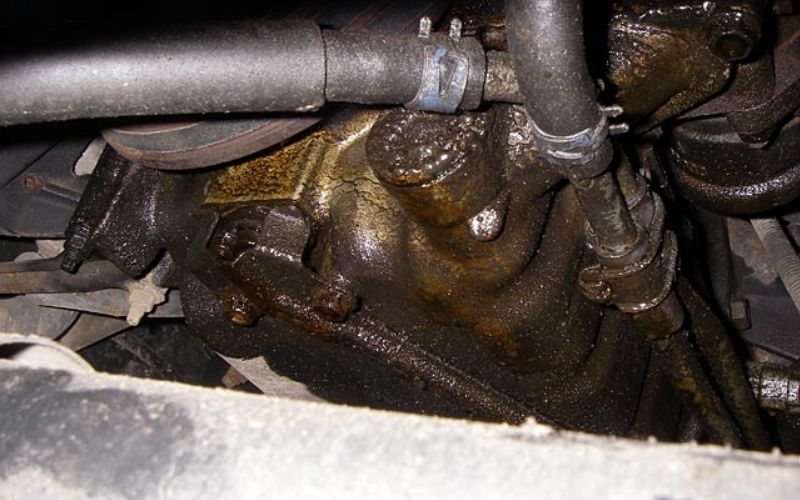
Have you recently changed or filled the oil, only to see a low oil pressure alert a few days later? You can deal with oil leaks. Although the signs of an oil leak may initially resemble a low oil level, it is important to check for signs of a leak to prevent unnecessary expenses on oil refills.
One of the most common causes of low oil pressure in older vehicles is an oil leak. This is because many of their components, such as oil lines, are more prone to wear, damage or damage. If you suspect your car has an oil leak, look out for these signs:
- Oil stains under your car. Cars with oil leaks usually leave puddles of oil on the ground where they were parked. On dry asphalt, oil spills may appear brown, black, or dark in color. If it has rained recently, the water can color the oil instead, giving a recognizable rainbow on the surface.
- Smoke from engine bay. When starting your vehicle, check if there is smoke coming from the engine bay. Depending on the location of your oil leak, it can drip onto hot components, such as the exhaust manifold, causing burns and smoke. If no smoke is visible, check for strange odors, such as the smell of burning oil.
- High engine temperature. An oil leak while driving can lower your engine’s oil level to unsafe levels. If you notice a sudden rise in your engine temperature gauge while driving down the road, it could be due to a leak.
- If you find signs of an oil leak, schedule a service appointment with a reputable local auto mechanic. They can identify the leak, repair it, and refill your car’s oil.
3. Oil Filter
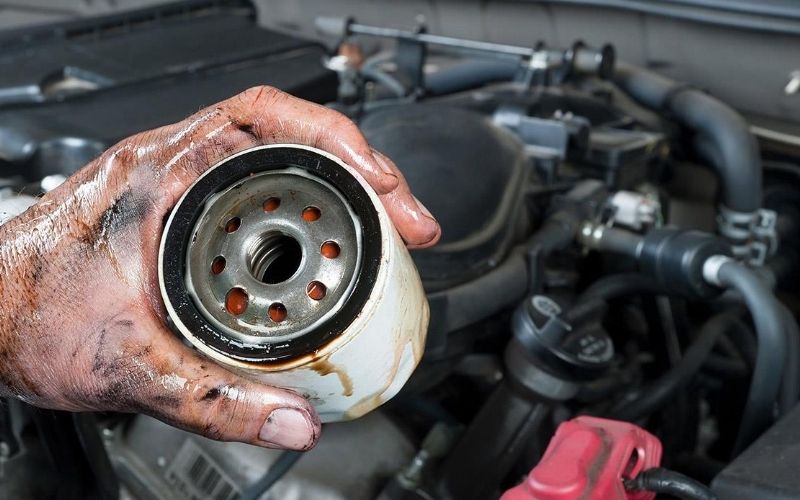
Every combustion engine has an oil filter designed to capture and remove impurities from the circulating oil as it passes through the engine and oil lines. Over time, these filters wear down and become clogged with accumulated dirt and debris, a process that is accelerated in dusty environments or when using old, damaged oil.
As dirt and grime accumulate in your oil filter, its effectiveness decreases. This can restrict oil flow and cause a drop in oil pressure. If your oil level is satisfactory and there are no signs of oil leakage, it is advisable to schedule an oil filter change soon.
A common guideline for modern vehicles is to replace the oil filter with every oil change. With more durable oil formulations, modern cars often exceed 6,000 miles between oil changes. Consequently, filters must maintain performance for a long period of time.
While you can continue driving with a dirty oil filter, you shouldn’t wait too long. Modern oil filters have a bypass valve that closes when the filter becomes excessively clogged, allowing the engine to bypass oil filtration to prevent oil starvation. However, once activated, the bypass valve allows unfiltered oil to enter the engine, risking rapid engine damage or failure.
4. Oil Sensors
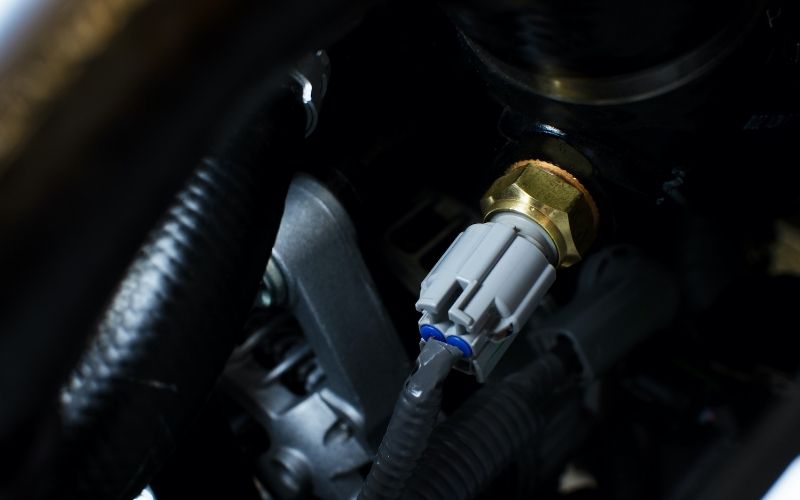
If you continue to get a low oil pressure warning after changing the oil and changing the filter, the problem may be a malfunction of the oil sensors.
Your car’s computer relies on these sensors to monitor the current level of oil pressure and decide when to display a low oil pressure warning on the dashboard. If the sensors become damaged or fail, they can send incorrect readings to the computer, mistakenly indicating a low oil pressure problem.
It is best to schedule a service appointment with a mechanic to fix it. They can inspect your car’s electronic system and determine if the sensors need to be replaced.
5. Oil Pump
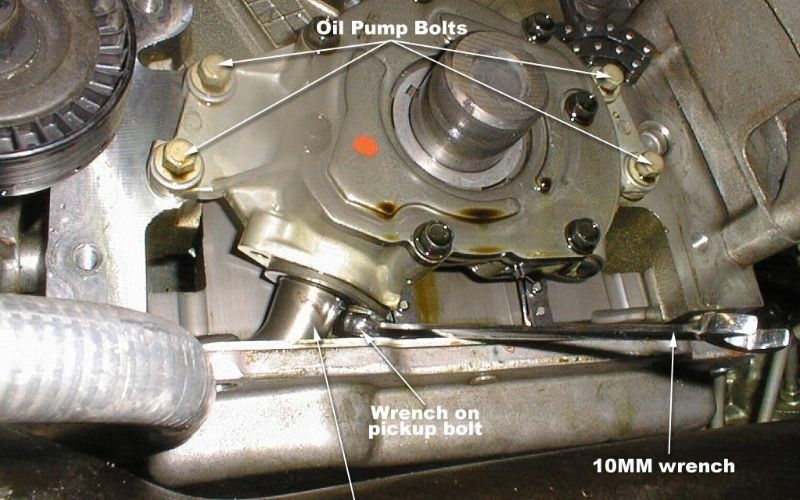
Oil pumps can deteriorate over time due to normal wear and tear. This can lead to a drop in oil pressure as their internal components become less efficient.
If your dashboard still shows a low oil pressure warning after an oil change or filter replacement, the oil pump may be at fault. A skilled mechanic can identify this possibility by inspecting your car’s oil sensors. If the sensors are not faulty and there is no other obvious reason for the low oil pressure, a new oil pump may be necessary.
Your mechanic can evaluate the condition of your oil pump and determine if it can be repaired or if it needs to be replaced. They can handle the necessary services, ensuring that your vehicle’s oil system is running normally again.
Conclusion: Oil Changes Schedule and Services
A low oil pressure warning can indicate a variety of problems, ranging from minor problems such as the need for an oil change to more serious concerns such as oil pump repair.
For More Articles: rowemotorcars.com

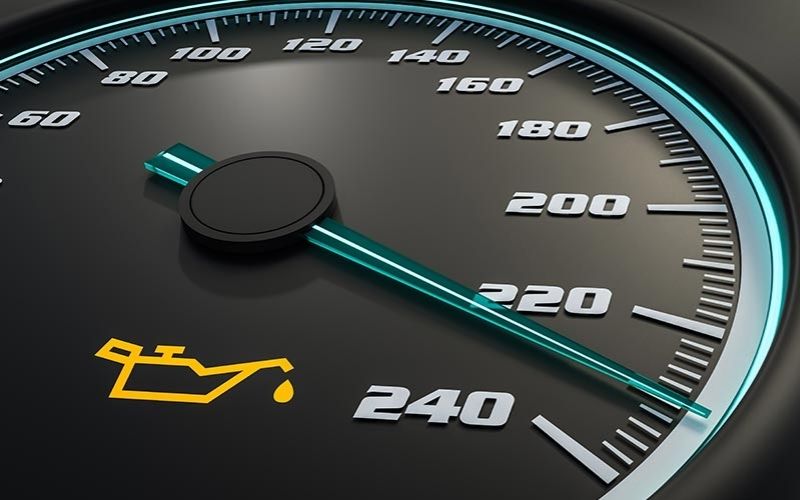
No Comments
Hello! I could have sworn I’ve been to this blog before but after browsing through some of the post I realized it’s new to me. Anyways, I’m definitely happy I found it and I’ll be book-marking and checking back frequently!
Your comment is awaiting moderation.